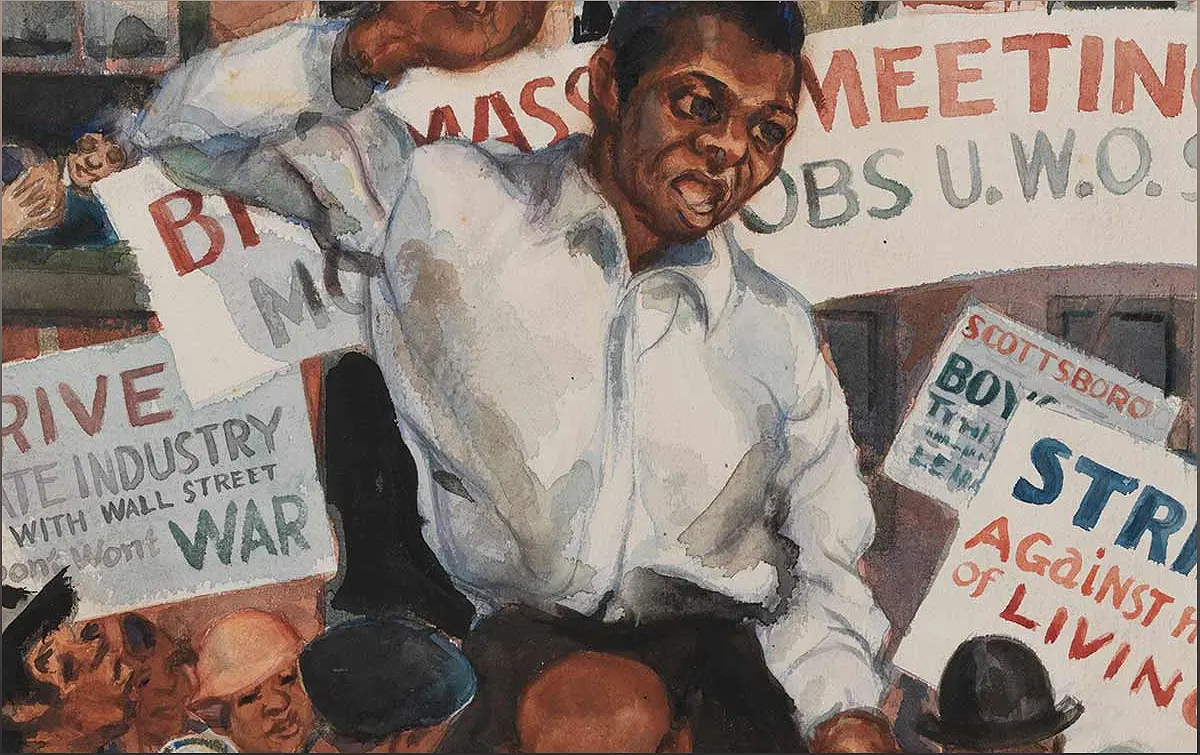Step into the vibrant world of 1930s American art, where creativity intertwined with political movements and social struggles. In this article, we delve into the exhibition 'Art for the Millions' at the Metropolitan Museum of Art, which aims to showcase the diversity and daring of the art of the era. From paintings to murals, prints to photographs, the artists of the time depicted the hardships of the Depression era and boldly criticized the capitalist system. Join us on a journey through this captivating exhibition that sheds light on the individuality and idiosyncrasies of the art of the 1930s.
Artistic Engagement with Left-Wing Politics and the Labor Movement
Explore the intersection of art and politics in the 1930s, as artists aligned themselves with left-wing ideologies and the labor movement.
In the midst of social and economic upheaval, artists in the 1930s found themselves drawn to left-wing politics and the labor movement. They used their creative talents to depict the hardships of the Depression era and to critique the capitalist system. One such example is the mural design proposed by Philip Guston, which was rejected by the Works Progress Administration (WPA). This rejection highlights the individuality and idiosyncrasy of the art of the time, even within the realm of political engagement.
Another powerful artwork from this period is a painting by Ben Shahn that portrays racial solidarity within the workforce. This piece sheds light on the complexities of union affiliation for Black workers, showcasing the struggles and resilience of marginalized communities during this era.
Exploring American Cultural Identity
Delve into the search for an American cultural identity in the 1930s, as artists expressed their visions of Americanness through various art forms.
The art of the 1930s in America was not limited to political engagement alone. Artists also sought to define and express an American cultural identity. This exhibition showcases different approaches to Americanness, such as drawings of American folk art, Martha Graham's dance performance 'Frontier,' and Thomas Hart Benton's lithograph 'Approaching Storm.'
These diverse artworks represent the competing expressions of Americanness during this time, highlighting the complexities and contradictions of the search for a national identity.
Additionally, the exhibition features works by Native artist Quah Ah, who reflects a Native modernism emerging in the period. This inclusion adds another layer to the exploration of American cultural identity, showcasing the contributions of Indigenous artists to the artistic landscape of the 1930s.
Narratives of Technological and Industrial Innovation
Discover the captivating narratives of technological and industrial innovation in the 1930s, as artists showcased the magnetic qualities of American design.
The 1930s marked a period of significant technological and industrial innovation in America. The exhibition highlights the art that emerged during this time, capturing the magnetic qualities of American design. Visitors can explore the works that depict the allure of new technologies and the industrial landscape.
One notable aspect of this section is the inclusion of works that reflect the fascination with the future and the promise of progress. Artists portrayed the sleek lines of modern machinery and the sense of wonder that accompanied technological advancements.
By showcasing these narratives of innovation, the exhibition offers a glimpse into the spirit of the time and the artistic responses to the changing world.
The Enduring Legacy of 1930s Art
Uncover the lasting impact of the art of the 1930s and its presence in public spaces, as it continues to resonate with audiences today.
The art of the 1930s in America left a lasting legacy that can still be felt today. Many of the artworks created during this period have found their way into public spaces, enriching the cultural landscape of cities and communities.
From murals adorning public buildings to sculptures in parks, the art of the 1930s continues to captivate and inspire. Its themes of social justice, political critique, and cultural identity remain relevant, reminding us of the power of art to shape and reflect society.
As you explore the exhibition 'Art for the Millions,' you will witness the enduring impact of the art of the 1930s and gain a deeper appreciation for the artists who dared to challenge the status quo and leave their mark on history.

